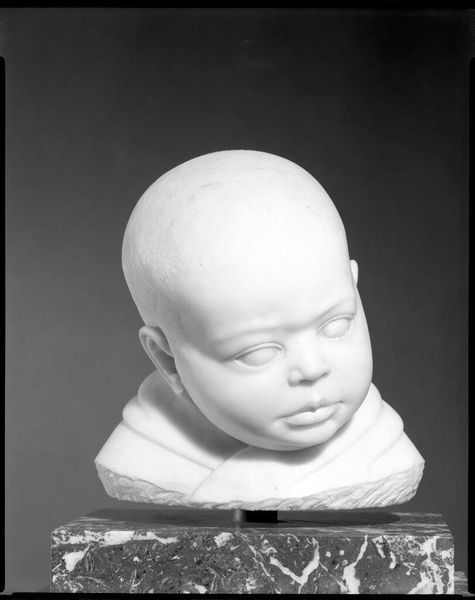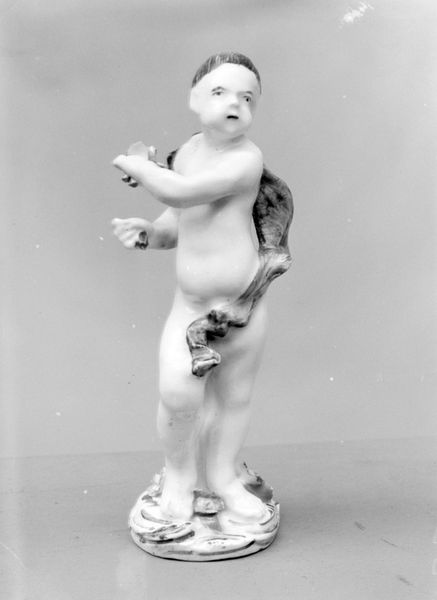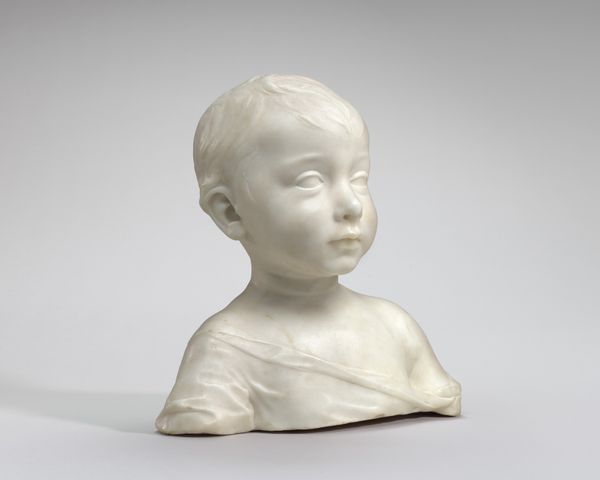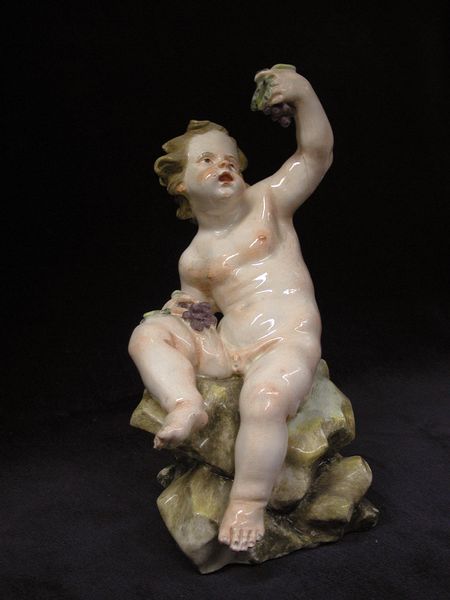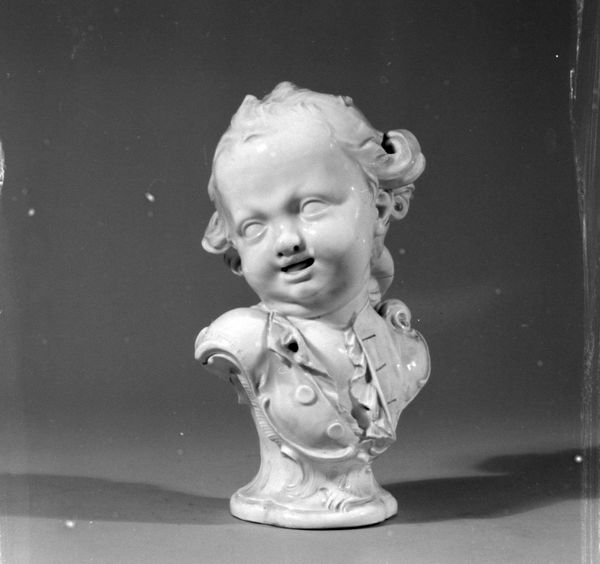
ceramic, porcelain, sculpture
#
asian-art
#
ceramic
#
porcelain
#
figuration
#
folk-art
#
sculpture
#
monochrome
#
decorative-art
#
monochrome
Dimensions: Height: 4 11/16 in. (11.9 cm)
Copyright: Public Domain
This is a porcelain Budai figurine, made by the Cozzi Manufactory in Venice, likely in the late 18th or early 19th century. Budai, often called the Laughing Buddha, was a popular figure in East Asian Buddhism, representing contentment and abundance. But why was a Venetian company producing figurines of a Chinese deity? The answer lies in the 18th-century craze for all things Chinese, known as Chinoiserie. European manufacturers sought to imitate and capitalize on the taste for exotic, Eastern designs. This Budai reflects the cultural exchange and appropriation that defined the period. The figurine's style, while depicting a Buddhist figure, incorporates European artistic conventions, creating a fascinating blend of East and West. Understanding its context requires delving into the history of European trade with Asia, the rise of porcelain manufacturing in Europe, and the social values that fueled the fashion for Chinoiserie. By examining historical documents, trade records, and design patterns, we can better understand the complex cultural forces that shaped this seemingly simple object. The interpretation of art is always contingent on its social and institutional context.
Comments
No comments
Be the first to comment and join the conversation on the ultimate creative platform.


